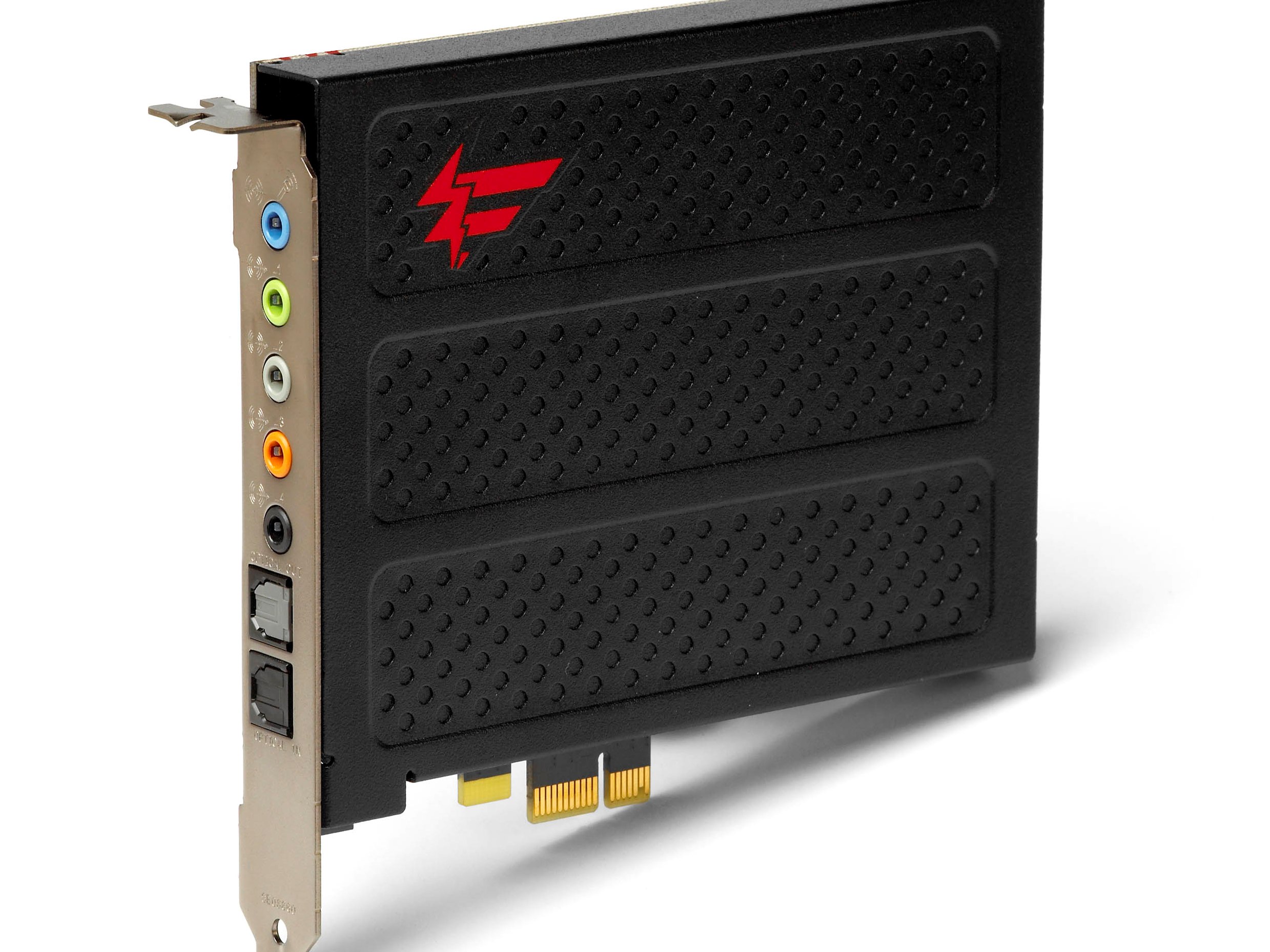TechRadar Verdict
An excellent card
Pros
- +
Great value
- +
Brilliant sound
Cons
- -
PCI-E might limit the market
Why you can trust TechRadar
First announced in May 2008, the new X-Fi Titanium series (taking over from the X-Fi Platinum series) comes in two different flavours. The first, cheaper option, is the PCI Express Sound Blaster X-Fi Titanium Fatal1ty Professional Series, which you can currently pick up for around £95.
And the second is the more expensive PCI Express Sound Blaster X-Fi Titanium Fatal1ty Champion Series.
The only difference between the two products is that the £160 Fatal1ty Champion series comes with an I/O drive for quick front panel connection to headphones and headsets. The actual sound card that comes with both packages is identical.
As you'd expect, the sound quality of this card is absolutely fantastic. It's marginally better than the X-Fi Platinum cards in fact. X-Fi crystallisation works better than ever, while CMSS soundstage expansion also works superbly.
One thing to watch out for here is that the Titanium series is only available as a PCI-Express card. So if you're running an older motherboard, you'll need firstly to check that you've got a PCI-E slot on your board, and secondly that you're not already using it.
Older boards like the nForce 650i have only one PCI-E slot, so if you're running two graphics cards in SLI mode, for instance, you'll already have used up that one slot. But those people with newer motherboards shouldn't have any problems finding a spare one.
Installation of the card is a fairly simple process, although if you're already running a Creative soundcard inside your system, we highly recommend you uninstall all drivers and software associated with that product before you put this one in.
Sign up for breaking news, reviews, opinion, top tech deals, and more.
Once you've got the software and drivers installed, set-up is also very easy. As with all X-Fi cards there are three basic modes to choose from: gaming, entertainment and audio creation. You can flip between them using the Audio Console in the Windows Control Panel.
Here you can change settings, and decide whether to switch on X-Fi Crystallisation and how far to crank it up.
X-Fi does a cracking job of making MP3's sound almost as good as CD's. If you're got a terrible MP3 ripped in 128kbps, X-Fi can't fix that. But if you're listening at 320kbps or there abouts, you'll notice that X-Fi is able to restore many of the highs and lows lost during compression.
The X-Fi Titanium series cards also do a brilliant job of pumping out 5.1/7.1 audio for movies and gaming. The audio is smooth, crisp and defined.
Both of the cards also feature Dolby Digital encoding, and a digital-out port for single-cable connection to home theatre systems.
The cards are also now THX-certified, and you can optionally install a THX control panel which gives you new options such as bass boost etc.
These really are two fantastic soundcards. And for £95, the X-Fi Professional Series card is certainly good value. And you have to say it's probably not really worth forking out the extra cash for the I/O drive.
If you need front panel access then go for the Champion Series, but if you're not bothered, we reckon you might as well just go for this cheaper option.

James was part of the TechRadar editorial team for eight years up until 2015 and now works in a senior position for TR's parent company Future. An experienced Content Director with a demonstrated history of working in the media production industry. Skilled in Search Engine Optimization (SEO), E-commerce Optimization, Journalism, Digital Marketing, and Social Media. James can do it all.
